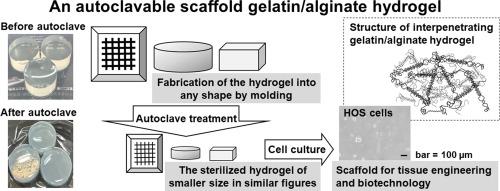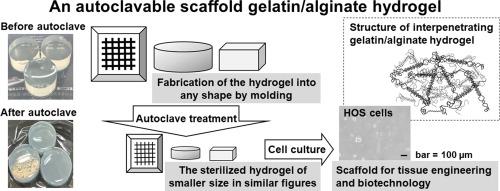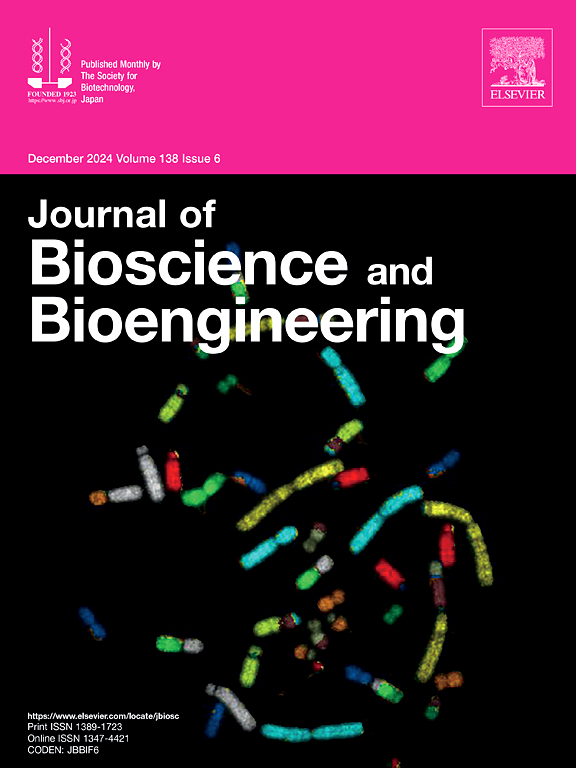Interpenetrating gelatin/alginate mixed hydrogel: The simplest method to prepare an autoclavable scaffold
Abstract
The choice of sterilization method for hydrogels used for cell culture influences the ease of preparing the gel. We prepared interpenetrating gelatin/calcium alginate hydrogels containing 1% (w/v) alginate and 1–16% (w/v) gelatin by molding with the mixture of gelatin/sodium alginate solution, followed by the addition of calcium ions by incubation in calcium chloride solution. It is the simplest method to prepare autoclavable gelatin/sodium hydrogel. We measured various properties of the hydrogels including volume, Young's modulus in the compression test, storage modulus, and loss modulus in the dynamic viscoelasticity measurement. The gelatin/alginate hydrogel can be easily fabricated into any shape by this method. After autoclave treatment, the hydrogel was shrunk to smaller than the original shape in similar figures. The shape of the gelatin/alginate hydrogel can be designed into any shape with the reduction ratio of the volume. Human osteosarcoma (HOS) cells adhered to the gelatin/alginate hydrogel and then proliferated. Gelatin/calcium alginate hydrogels with a high concentration are considered to be autoclavable culture substrates because of their low deformation and gelatin elution rate after autoclaving and the high amount of cells attached to the hydrogels.



 求助内容:
求助内容: 应助结果提醒方式:
应助结果提醒方式:


